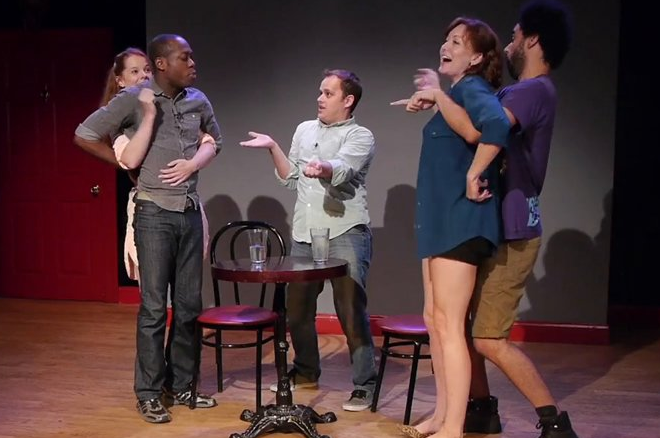Send in the clowns--the hilariously outrageous ones
CORRECTION: Our video states that Commedia began in the 1400s. It actually began in the 1500s. Perdonare il nostro errore!
Ever see a show with lunatic clowning, intrigue and deception, mistaken identity, cartoon-like characters, and a dollop of acrobatics? Was the style coarse, full of slapstick, with lots of improvisation and audience interaction? Sounds very “Commedia dell’arte.”
That’s short for Commedia dell’arte all’improvviso, which means “light entertainment based on the craft of improvisation.” Or, translated more loosely, “freakin’ hysterical comedy.”
The Commedia flourished in Renaissance Italy, when traveling players put up temporary stages for raucous comedies they improvised around familiar scenarios. Commedia troupes introduced the concept of the professional actor into European society, and they were among the first to employ women on stage. Many of the plot formulas and character types codified in the Commedia are still with us today.
A great example is Carlo Goldoni’s classic farce A Servant of Two Masters, seen most recently on Broadway as One Man, Two Guvnors. Playwright Richard Bean updated Goldoni’s scenario to an English resort town in 1963. James Corden starred as a small-time operator obsessed with food and females who signs on as a helper to both a local gangster and an upper-class criminal, then desperately tries to keep the two from meeting. Physical comedy, mayhem, mistaken identity, broad stereotypes, audience interaction, and improvisation—the show has it all.
Corden’s character, Frances Henshall, is an update of “Arlecchino” (Harlequin), one of the Commedia’s many “stock” types, each with overblown character traits and a distinctive costume. Other Commedia types made their way into the works of Moilère, as well as many of Shakespeare’s plays. For example, the title characters in Romeo and Juliet are Elizabethan analogues of the “Innamorati,” or young lovers; the Nurse recalls “La Ruffiana,” an older female windbag; while Tybalt is a version of the blowhard “Capitano.”
Commedia influences have filtered into clown routines and puppet shows like Punch and Judy, music-hall pantomimes, vaudeville, and minstrel shows. The Marx Brothers, John Cleese, Mel Brooks, Warner Bros. cartoons, and improv troupes like Second City are among the Commedia’s direct descendants.
The costumes may change, but not the types. You can spot them everywhere: Inspector Jacques Clouseau in The Pink Panther, blind to his own ineptness, is a “Capitano” figure. Harpo Marx recalls the loveable rogue “Brighella.” Arrested Development‘s Dr. Tobias Fünke is an oblivious pedant—a “Dottore.” So is Frasier from Frasier. Bugs Bunny is a “Scapino” with rabbit ears and a Bronx accent. Can you think of others?
Some Favorite Commedia dell’arte Characters:
– Ben Pesner
This video was made in collaboration with our friends Jinkx Monsoon and Major Scales, stars of The Vaudevillians. (Jinkx was also the Season 5 winner of RuPaul’s Drag Race!)
Starring and written by Jinkx Monsoon and Major Scales.
Directed by Mark Blankenship, the Theatre Dictionary‘s editor-in-chief
Shot and edited by Nicholas Guldner
This video was filmed at Theatre Row in New Square.

